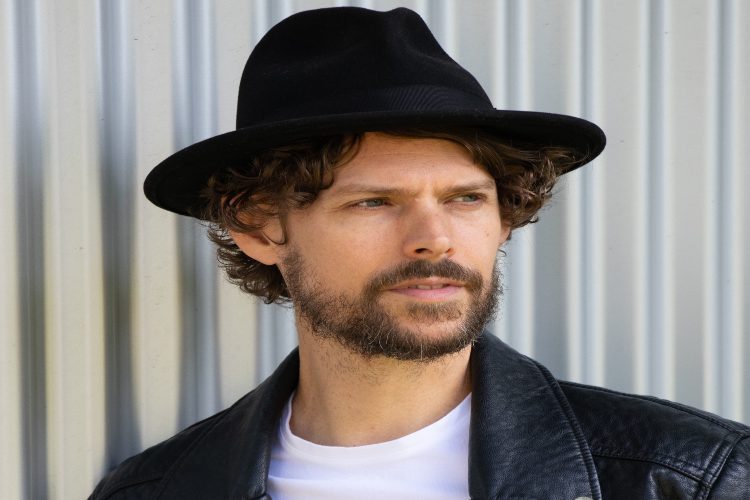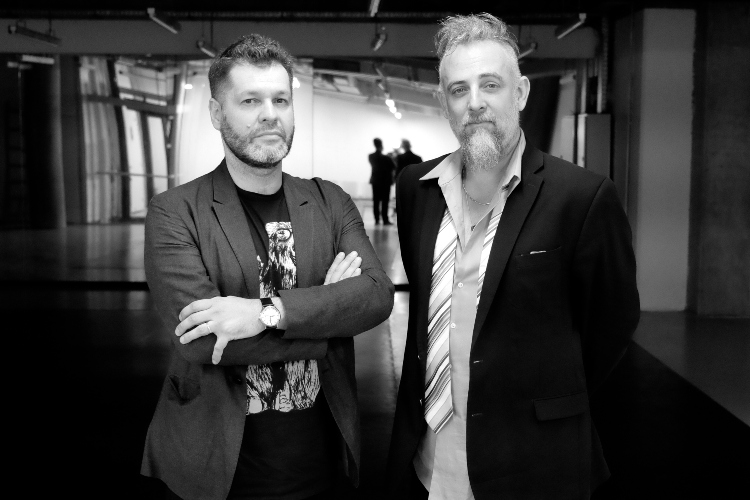Universal Chord: Jarrod Lawson on ‘Be the Change’
|
Getting your Trinity Audio player ready...
|
Portland-based singer-songwriter/pianist Jarrod Lawson made waves in 2014 with his self-titled debut album, quickly garnering an international fanbase who have been clamoring for a sophomore project ever since. 2019’s VISIONS groove tape quelled those appetites briefly (available on Bandcamp under the pseudonym Orpheus) and demonstrated Jarrod’s range and production skills. In late 2020, he returned as frontman-in-earnest with Be The Change (Dome Records). It’s a lush and thoroughly uplifting album, well-steeped in many canons. Lawson’s core band of drummer Cory Limuaco, bassist Chris Friesen and guitarist Trent Baarspul is joined by legendary percussionist Sammy Figueroa, whose inimitable presence anoints the album with an old-school soul flavor – you know, that conga sound. Contemporary R&B heads will also enjoy an appearance from Moonchild on “I’ll Be Your Radio.”
Between the fresh, harmonically-rich arrangements, diverse orchestration, thoughtful and imaginative lyrics, and classic soul-styled grooves, there is a great deal to appreciate here for music lovers of all stripes. That’s all before we even mention Jarrod’s warm vocals, intricate harmonies and tasty piano playing. The interplay between the instrumental and vocal content is really a treat; neither dominates the spotlight, and wedded together they make each song feel like its own ecosystem with its own alchemy. This is sui generis songcraft that rewards immersion and repeat listens. Threads of social consciousness are also wonderfully woven into this album, aligning it with the tradition of so many classic soul records. On “Be The Change”, “Battlefield”, “Universal Chord” (a song some 15 years in the making), “Connected”, “Embrace What We Are” and “How Long,” Lawson seems to be praying rather than proselytizing. His message is an inspiring appeal to our basic humanity and interconnectedness, and its delivery never detracts from the uplifting tone of the music. Jarrod was kind enough to discuss the subtleties of this approach in our interview below, as well as songwriting, left-hand bass, and more.
PostGenre: Portland is known for its creativity and uniqueness, yet its music scene seems to fly somewhat under the radar. What were some of your formative Portland musical experiences?
Jarrod Lawson: The single most formative musical experience for me was a two year period when I had the opportunity to play every Monday night in a trio with two of the most accomplished players on the planet, Reinhardt Melz (drums) and Jay “Bird” Koder (guitar). These guys are truly masters of their instruments. Among other things, both of them have played in Gino Vannelli’s band for many years, which requires a ridiculously high level of technical proficiency. When I showed up for our first ever gig at the Candlelight Lounge here in Portland, I had no idea what to expect. Jay had invited me to come try out this gig with him and Reinhardt… no rehearsal, just show up and see what happens. This was nerve racking for me, but I reluctantly agreed. Essentially my role was lead singing, playing keyboards, and most importantly, playing left hand bass- which was a skill I had been cultivating for many years – but not to the level required to play with these guys. This is where I really grew over those two years playing with these monstrous figures. By the end of our residency there, my left hand bass skills had grown exponentially and I felt comfortable to play left hand bass with just about anyone.
PG: Be The Change was released through Dome Records out of the UK, a country where you receive a lot of love. How do you contrast the landscape across the pond to things stateside, as both industries await a return to live performance?
JL: Well, following the release of my debut album in 2014, I received SO MUCH love from folks in the UK, right out the gate, that my focus immediately and necessarily shifted to that region. I struck a deal with Dome Records, and that gained me proper distribution throughout Europe which was huge. But to be fair to the US, I never had such distribution there. The US is so massive and I was very unfamiliar with the scene across the different states at that time. I’ve now discovered where the hot spots are… the places where my music is most appreciated and loved, but also, I now have distribution in the US which I think is really changing the game for me and vastly increasing the amount of ears this new album is capable of reaching.

PG: The socially charged tracks that bookend the album, “Be The Change” and “How Long” are messages of urgency, but avoid any tone of anger or foreboding in favor of a musical sense of uplift and positivity. How do you go about striking that balance while still conveying the seriousness of your message, and who are the artists you admire for integrating social consciousness into the music?
JL: I feel like the answer to this question rests predominantly on both how the lyric is composed and how the lyric is delivered. You’ll notice that in the two songs you mentioned, I quite often choose to structure my lines in the form of questions. This helps to avoid pointing the finger at anyone or anything, which I think inherently renders the lyric more thought-provoking and less critical/judgy. I also like to use the word “WE” a lot, so as to make very clear that I’m including myself in the equation. Perhaps even more importantly though is HOW the vocal delivers the message. A slight change in tonal inflection, or perhaps switching from a more forceful chest voice to a lighter, more sensitive falsetto tone can completely change the way that a lyric is received. I tend to play with this dynamic a lot, so I’m constantly switching between the different tonal colors that I have at my disposal to convey the message in the most impactful way I know how. Here are a few artists that I admire for their inclusion of socially conscious messages in their music: Stevie Wonder, Curtis Mayfield, Gil Scott Heron, Paul Simon, Joni Mitchell, Bob Dylan, Erykah Badu, Bob Marley, Common, Mos Def, Michael Kiwanuka, Sault, Kendrick Lamar, and Anderson .Paak
PG: The songwriting in this project really rewards multiple listens – the imagery in tunes like “Battlefield” and “Universal Chord” create an air of thoughtfulness and unpredictability, a challenge that the band and arrangements rise to meet. The Stevie Wonder and Donny Hathaway connections have been made before, but who else do you credit as an influence on your composition and lyricism?
JL: It may or may not sound like it when you listen to my music, but these composers have had a monumental impact on me as a composer and/or lyricist over the course of my life: Frederic Chopin, Chick Corea, Herbie Hancock, Billie Holiday, Jaco Pastorius, Take 6, George Duke, Carole King, The Beatles, D’Angelo, Prince, Paul Simon, Hiatus Kaiyote, and Joni Mitchell.

PG: You can really hear and feel the six years that went into this album. How do you know when you’ve pushed a song across the finish line, and how do you process the pressures of a creative landscape that increasingly emphasizes repetition and quantity over quality?
JL: For me, it often involves letting a song steep for a considerable amount of time, sometimes many years, before I feel it’s truly arrived at its final destination. Certainly not all of the time. Quite often songs come together very quickly and effortlessly, but there are invariably, from time to time, compositions that pose a myriad of challenges and obstacles to overcome. “Universal Chord” is a great example of this. The original concept of this song came to me somewhere around 15 years ago, and despite my diligent efforts at the time, the song never quite seemed to fully come together. So, I left it alone… occasionally revisiting it over the years and making slight tweaks and adjustments here and there, and then about two years ago, I felt inspired to take a serious look at the song. So much time had passed at that point that I had detached myself from the idea that it needed to conform to any particular structure. At that point, I gave it a serious overhaul, rewriting several of the verses, adding new verses, and adding a bridge and multiple key modulations at the end of the song. Now, I’m incredibly happy with the way it turned out!
On the question of our current climate pushing quantity over quality, I guess the truth is, I don’t give much thought to it. It’s impossible for me to compromise the quality of my work for the sake of anything. Something innate within me won’t allow me to work in a way that forsakes the integrity of the music in order to crank out recordings at a faster rate. So my intention is to continue producing music as I have up until now, on my own timeline, with no one to answer to but myself. This may come across as a little autocratic, but I feel that this is how to best preserve the integrity and purity of the vision.
Listen to Be The Change, out now on Dome Records, and look out for today’s single release of “Love Isn’t Always Enough.” Visit Jarrod’s website for more on his music and upcoming performances.




Great interview and piece!